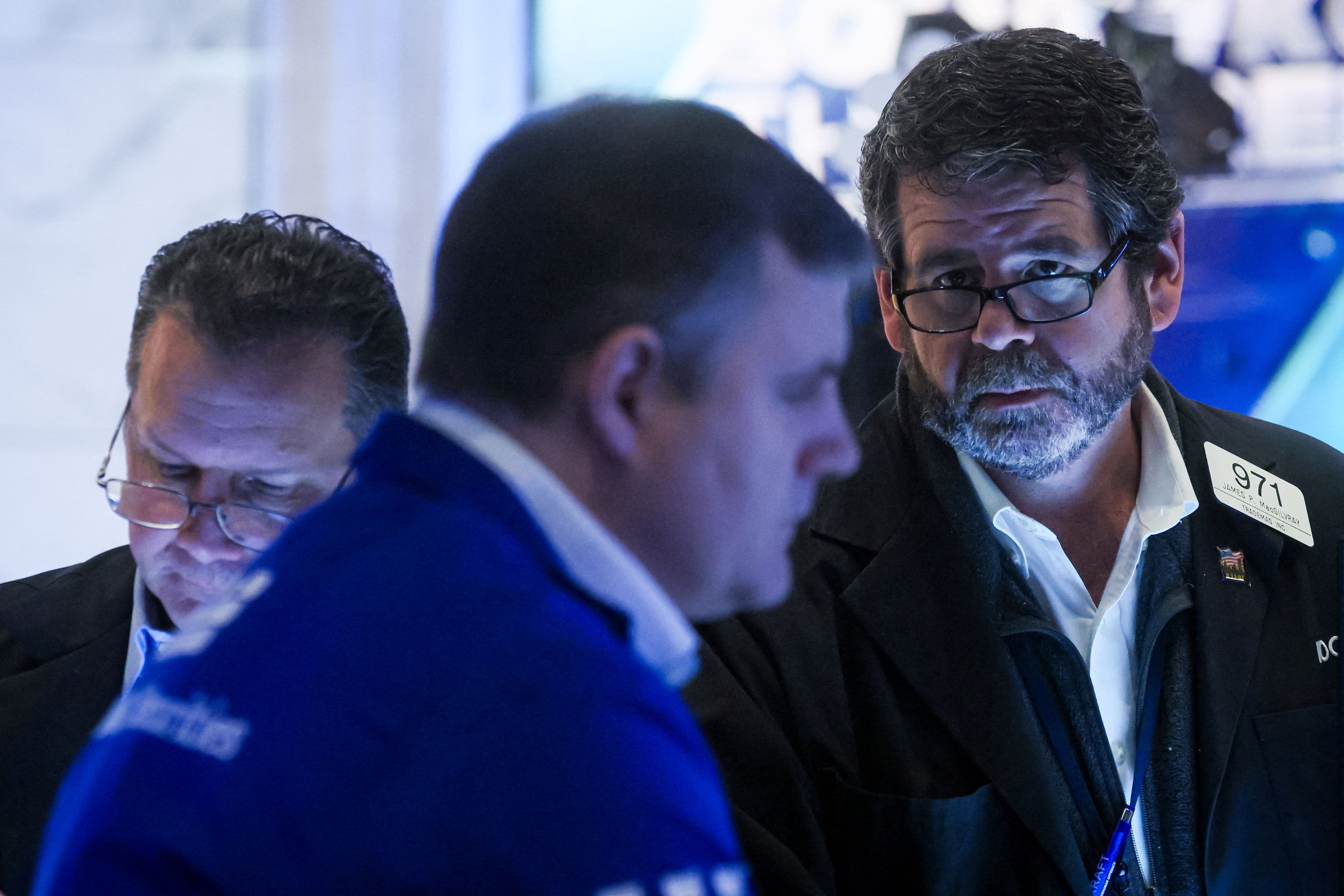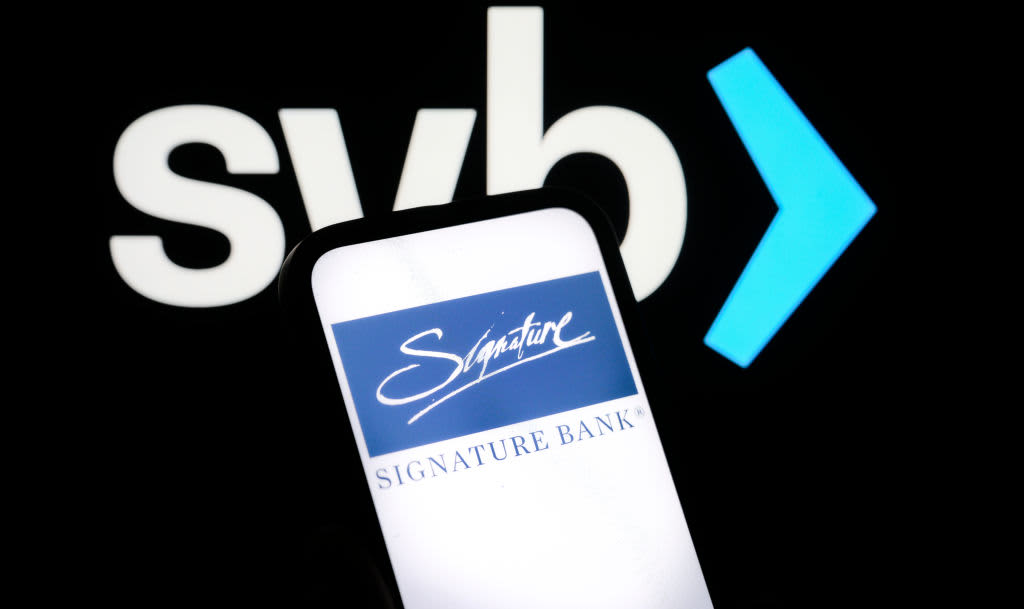The panic-induced customer withdrawals that imploded Silicon Valley Bank and Signature Bank — and sent shock waves through financial markets and the broader banking system — offer an acute lesson in human psychology.
In this case, an understandable “behavioral bias” led to bad financial outcomes, experts said.
related investing news
“Psychology injects a lot of extra risk into the world,” said Harold Shefrin, a behavioral finance expert and finance professor at Santa Clara University. “And we experienced that risk last week — from Silicon Valley Bank and the reactions on the part of its depositors.”
Customer fear became a self-fulfilling prophecy
Our brains are hard-wired for a bank run.
Humans evolved as social creatures that thrive in groups, said Dan Egan, vice president of behavioral finance and investing at Betterment. As such, we care a lot about what others think and do.
So, we run if we see others running — a handy impulse when it meant life or death for early humans fleeing bears and lions, but which may not make sense in the modern era, Egan said.
Last week, bank customers saw their peers run for the exits; sensing danger, that herd mentality meant they also rushed to withdraw their cash. But banks don’t keep customer deposits on hand; they generally invest or lend them to make money. SVB and Signature didn’t have enough cash to meet redemptions.
Fear among the collective group became a self-fulfilling prophecy: It triggered a bank failure, the very problem everyone initially feared, Egan said.
More from Personal Finance:
What small businesses should look for when choosing a bank
What Signature Bank, Silicon Valley Bank failures mean for consumers and investors
What to know about FDIC insurance
Why the bank run on SVB seemed ‘rational’ for some
There are firewalls against this kind of behavior. The Federal Deposit Insurance Corp., or FDIC, backstops bank customers’ savings up to $250,000.
This insurance program was created in 1933. At that time, widespread hysteria during the Great Depression had toppled thousands of banks in rapid succession.
FDIC insurance aims to instill confidence that the government will make customers whole — up to $250,000 per depositor, per bank, per ownership category — if their bank fails.
“Prior to the establishment of the FDIC, large-scale cash demands of fearful depositors were often the fatal blow to banks that otherwise might have survived,” according to a chronicle of the agency’s history.
SVB’s customer base included many businesses like technology startups with a high degree of uninsured deposits (i.e., those exceeding $250,000). As of December, about 95% of the bank’s deposits were uninsured, according to SEC filings.
Its failure illustrates a few principles of behavioral finance.
One is “information asymmetry,” a concept popularized by economist and Nobel Laureate George Akerlof, Shefrin said. Akerlof, the husband of Treasury Secretary Janet Yellen, analyzed how markets can break down in the presence of asymmetric (or unequal) information.
His 1970 essay, “The Market For Lemons,” focuses on the market for old and defective used cars (colloquially known as lemons). But information asymmetry applies across many markets and was a source of Silicon Valley Bank’s collapse, Shefrin said.
The bank said March 8 that it was selling $21 billion of securities at a loss and trying to raise money. That announcement triggered a panic, amplified by social media. Customers saw peers rushing for the exits and didn’t have the time (or perhaps acumen) to pore over the bank’s financial statements and judge whether the bank was in dire straits, Shefrin said.
Rational market theory predicts that customers with uninsured deposits — the bulk of its customers — would move to protect themselves and secure their savings, he said.
Psychology injects a lot of extra risk into the world.Harold Shefrinfinance professor at Santa Clara University
“If you have more than $250,000 at bank, in the absence of information, you have to assume the worst,” Shefrin said. “And, unfortunately, it becomes rational for you to participate.”
Hence, a bank run.
But the same rationality doesn’t necessarily apply to bank customers whose deposits are fully insured, however, since they’re not at risk of losing their money, experts said.
“If you have less than $250,000, and if you don’t need to meet payroll or feed your family, then there’s no need to rush,” said Meir Statman, a behavioral finance expert and finance professor at Santa Clara University. “In this case, [withdrawing your money] is not the rational thing or the smart thing to do.”
Bank officials also exhibited a psychological “failure” in their initial announcement of their need to raise money, Shefrin said. They didn’t grasp the concept of “market signaling” and failed to anticipate how their communication of information might trigger a panic, he said.
“If you don’t rationally understand the way the market interprets signals, you can make a mistake like Silicon Valley Bank,” Shefrin said.
Behavioral bias likely amplified a bank run
Fear among depositors also seems to have been amplified by behavioral bias, Egan said.
Stashing all deposits at a bank with like-minded tech-company founders may mean customers experienced the same fears at the same time, akin to an echo chamber, he said.
Diversifying any savings that exceed $250,000 across multiple banks — so no one account exceeds the FDIC insurance limit — is a rational solution to alleviate stress and fear, Egan said.
The Biden administration stepped in Sunday to quash concern among depositors. Regulators backstopped all uninsured deposits at SVB and Signature Bank and offered funding to troubled banks. Eleven Wall Street banks on Thursday injected $30 billion into First Republic Bank, a smaller player that seemed on the precipice of collapse, to help shore up confidence in the banking system.
Given recent government backstops, there’s “no reason” depositors should be running for the doors, said Mark Zandi, chief economist of Moody’s Analytics.
“But confidence is a very fickle thing,” Zandi said. “It’s here today, gone tomorrow.”





